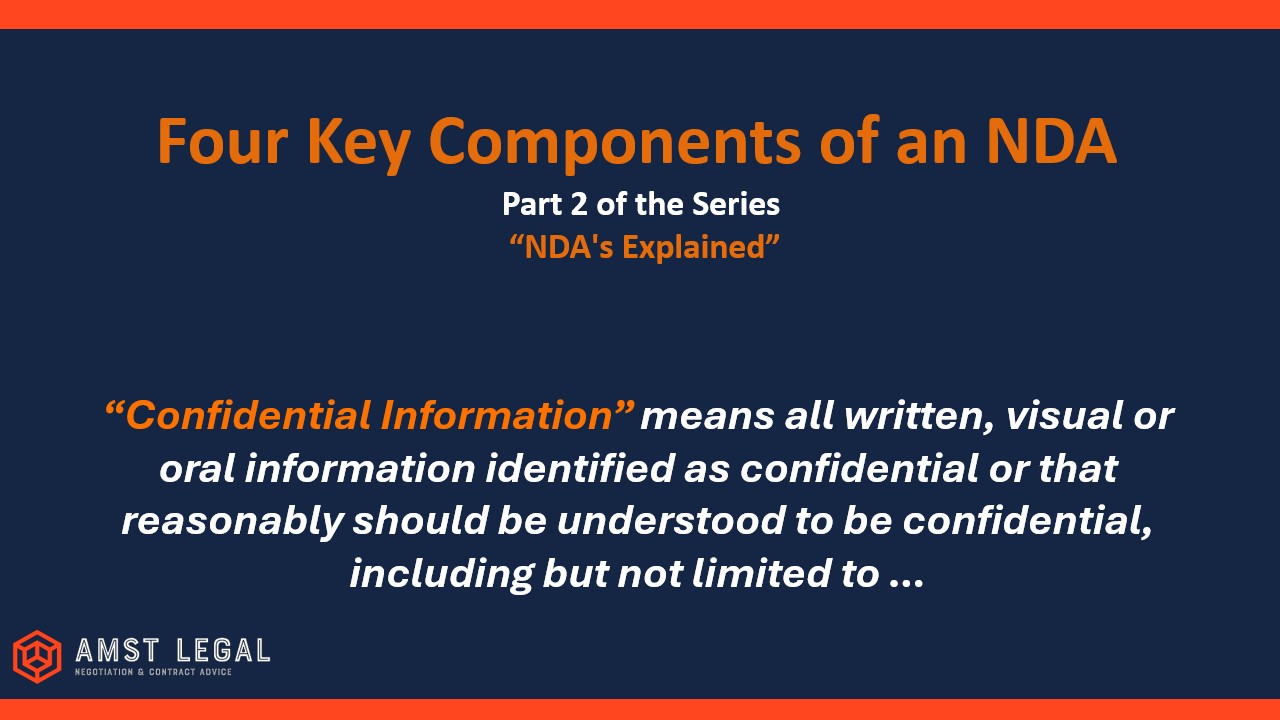
How to Finish the Quarter Strong in Contract Negotiations – 6 Tips
Introduction
Is there a way to prepare for contract negotiation peaks, like the end of the quarter? Especially before the end of Q2 (Summer holidays and Q4 (Christmas holidays) commercial and legal teams see a spike in contracts that need to be signed. Also see this Harvard Business article on the end of quarter sales rush and how to improve your sales processes.
As a lawyer and in-house legal counsel since 2004, I’ve witnessed firsthand the challenges faced as quarter-end approaches. Negotiation deadlines, approvals bottleneck and orderly workflows turn into chaos and team members are stressed. What if you could approach this challenging period with strategic foresight and unmatched efficiency? Let’s explore how proactive planning can transform your end-of-quarter chaos into a symphony of streamlined processes in the Article ‘How to Finish the Quarter Strong in Contract Negotiations – 6 Tips’.
Harnessing Proactive Steps to Master the Quarter-End Crunch
The key to conquering the quarter-end isn’t reactive measures but proactive planning. With Q2 upon us, now is the perfect time to optimize your legal department’s operations and prevent the usual end-of-quarter negotiation bottlenecks.
Setting the Stage for Efficiency
While Q2 is often underestimated in terms of urgency, it’s an ideal period for reflection and goal setting. Take this time to evaluate your legal department’s past achievements and outline ambitious targets for the weeks ahead. Actions taken now will not only streamline current processes but will also pave the way for a smoother Q3 and beyond.
Preparation in the previous months is instrumental in achieving this efficiency. Working on templates and improving meeting structures between legal and all relevant teams sets a solid foundation for success.
Example: One of my clients, a mid-sized tech company, struggled with the chaos of quarter-end contract negotiations. By introducing standardized templates for recurring agreements and setting up regular bi-weekly meetings between the legal team and sales departments, they managed to streamline their processes significantly. Within two quarters, the time spent on each contract was reduced by 30%, and the number of last-minute urgent requests dropped dramatically.
Here are some actionable tips to set your team up for success:
Templates Only
Avoid new custom-made contracts. Use standardized templates to save time and reduce errors.
Focus Only on Q2 Deals
Prioritize deals closing this quarter. Concentrate your efforts on what can be completed by the end of Q2 to avoid last-minute rushes.
Write Down Lessons Learned
Document improvements for future reference. Reflect on past challenges and successes to refine your processes continuously.
The Power of Proactive Communication
With only a few weeks left in Q2, initiating a targeted communication strategy is crucial. Here’s a recommended approach:
Proactive Communication
Initiate clear and targeted communication early, also with outside counsel and customers. Open lines of communication ensure everyone is on the same page and can address potential issues promptly.
Set Clear Expectations
Define focus areas and require management approval for exceptions. Clearly articulate priorities to your team and stakeholders to ensure alignment and minimize distractions.
Example
At a large financial services firm I worked with, the legal team started sending out a “Quarter-End Preparation Bulletin” four weeks before the end of each quarter. This bulletin included a clear outline of priorities, deadlines, and key contacts for any urgent matters. By setting these expectations early, the team saw a 50% reduction in last-minute contract sign-offs and a smoother approval process.
Recommended Approach:
- Targeted Communication: Start with drafting a clear, concise email to your Sales, Partner, and Procurement teams.
- Clear Expectations: Outline that your focus for the upcoming two weeks will revolve around ongoing contracts, genuinely urgent matters, and documents needing signatures by quarter-end.
- Management Approval: Make it known that any deviations from these priorities will require direct approval from senior management.
Building Trust Through Consistency
Implementing this proactive communication strategy may initially meet some resistance. However, consistency will foster trust and acceptance over time, leading to earlier and more efficient interactions with Sales, Procurement, and Partnership teams.
Consistency Builds Trust
Regular, predictable processes lead to better outcomes. Establishing a routine will help your team and stakeholders know what to expect and plan accordingly.
Consistency is key. When your team and stakeholders know what to expect, it builds trust and reliability. This consistency ensures that everyone is prepared and can plan their work around these predictable processes.
Proven Success and Long-Term Benefits
Adopting this proactive stance can yield significant improvements within just a few quarters. By optimizing the use of your team’s resources and ensuring focus on critical, time-sensitive tasks, you can achieve better results and reduce stress.
Example
A medical devices company we advised implemented these strategies and saw notable improvements within 2 to 3 quarters. The legal team’s productivity increased by 40%, and they reported a significant reduction in stress levels and overtime hours during quarter-end.
Next Steps for Implementation
Before you send out that crucial email, ensure your team is aligned during your regular meetings and gain the necessary buy-in from key stakeholders to support this new strategy. Make sure everyone understands the benefits and is on board with the changes.
Conclusion
By embracing proactive strategies before the peak of Q2, you can effectively reduce negotiation hurdles and enhance your legal team’s productivity throughout the year. This approach, honed through my extensive experience in various high-level legal roles, can transform your quarter-end processes into efficient, well-oiled operations

How to Improve Your Negotiation – 7 Best Books to Read
7 Great Books to start with when you want to improve your Negotiation style. You will absolutely see that you will be a better negotiator if you apply the lessons mentioned in these books.

Förklaring av NDAs – Vad du behöver veta (del 1)
Förklaring av NDAs – Vad du behöver veta (del 1)
I den konkurrenskraftiga affärsvärlden där idéer, innovationer, finansiell information och hemligheter är framgångsnycklarna, spelar Non-Disclosure Agreements (NDAs) ofta en viktig roll i att skydda ett företags konfidentiella information. NDA säkerställer att den konfidentiella informationen endast används för det specificerade ändamålet som parterna i en affärsrelation avtalat om. Denna artikel kommer att ge en omfattande översikt av NDA i sammanhanget Business to Business (B2B).
Vad är ett NDA?
Ett NDA, även kallat sekretessavtal, är ett juridiskt bindande avtal mellan två eller flera parter med syfte att skydda konfidentiell information som kan komma att delas under tiden av deras affärsrelation. Mer specifikt är företags konfidentiella information icke-offentlig information som skulle kunna skada företaget om det skulle offentliggöras. Vanligtvis inkluderas en lista över den konfidentiella informationen i avtalet. Det kan innehålla exempelvis affärshemligheter, know-how, produkt- och teknikrelaterad information, rabatter, kundlistor, försäljnings- och finansiell information, affärsplaner etc.
Varför och när behöver vi ett NDA?
I B2B-sammanhang kan NDA vara ett väsentligt verktyg för att skydda affärshemligheter och annan konfidentiell information som är viktig för ett företag för att bibehålla dess konkurrensfördelar. Denna känsliga information bör därför definieras tydligt och noggrant i NDA. Var däremot försiktig med att inte definiera det för snävt för att säkerställa att du inte har missat en viktig kategori. Genom användande av ett korrekt utformat NDA kan ditt företag skydda värdefull information från konkurrenter eller tredjeparter som kan dra nytta av att sådan information avslöjas.
Primärt syfte
Det primära syftet med ett NDA är att säkerställa att den avslöjade känsliga informationen används och hanteras säkert, vilket förhindrar en avslöjande part att använda eller röja informationen utan vederbörligt tillstånd och behörighet. Ett NDA undertecknas ofta i början av en affärsrelation innan man går in i affärsrelationen.
Exempel
Vanligt exempel: Ett teknikföretag planerar att sälja och erbjuda specialiserade programvarulösningar till en företagskund. Företagen börjar med att diskutera hur man integrerar programvaran i kundens system för att fastställa priset för integrationen och användningen av programvaran. För detta kan teknikföretaget dela insyn om sin prissättning, SLA, policys och programvara, och kunden kan i sin tur förklara sina utmaningar och dela affärsplaner. När företagen gör detta planerar de således att dela dokument, inklusive icke-offentliga sådana, det vill säga konfidentiell information. Därför rekommenderas det att sådana företag skriver under ett NDA innan de delar sådan konfidentiell information sinsemellan. Ett sådant NDA kan sägas upp när parterna undertecknar ett slutligt kundavtal, vilket också bör inkludera sekretessvillkor.
Hur skyddar ett NDA din konfidentiella information?
Precis som för vilket annat juridiskt avtal som helst, medför avtalsbrott av ett NDA rättsliga konsekvenser. Beroende på avtalsbrottets allvar kan konsekvenserna sträcka sig från rättsprocesser och ekonomiska påföljder till åtal i extremfall. Avtalsbrott avseende ett NDA kan också skada en parts renommé, vilket kan leda till andra långvariga konsekvenser för dess affärsverksamhet, särskilt i affärsrelationer och i branscher där förtroende och sekretess är avgörande. Rättsliga anspråk och stämningar rörande avtalsbrott av ett NDA hör inte till vanligheten, men det händer definitivt att ett företag behöver betala vite för avtalsbrott. Vi har även gett rådgivning några gånger tidigare i denna fråga.
Vilken slags NDA behöver du?
Det finns olika typer av NDA som kan användas baserat på de specifika omständigheterna och de involverade parternas behov. Nedan listas de tre vanligaste typerna:
- Unilateralt NDA (Ensidigt NDA): I ett ensidigt NDA ålägger en part, vanligtvis säljaren, den andra parten skyldigheten att säkra informationen och inte avslöja eller använda informationen för något annat syfte än det som specificerats i avtalet. I ett B2B-sammanhang, används ensidiga NDA ofta mellan köpare och säljare. Exempelvis kan ett bioteknikföretag (säljare) använda ett ensidigt NDA för att förhindra köparen från att avslöja känslig information de har fått vid köp av produkter eller tjänster såsom immateriella rättigheter och datorteknologi. Det är även vanligt i offentliga upphandlingar och för RFI (Request for information) vid RFP (Request for Price) situationer.
- Gemensamt NDA (tvåsidigt eller ömsesidigt NDA): Ett ömsesidigt NDA involverar två parter där båda parter kommer att dela känslig information med varandra och kommer ömsesidigt överens om att båda parter blir bundna av tystnadsplikt. Ömsesidiga NDA används ofta när parter behöver utbyta betydande mängder av konfidentiell information under sina förhandlingar eller affärsrelationer. Sådana situationer kan vara joint ventures, leverantörsavtal eller företagsförvärv.
- Multilateralt NDA (tre- eller flerparts NDA): Ett multilateralt NDA inkluderar tre eller fler parter, där åtminstone en part delar känslig information med andra parter och genomdriver tystnadsplikt. Den här typen av NDA förenklar pappersarbetet och administrationen för parterna på så sätt att parterna inte behöver ingå flertalet ensidiga eller bilaterala NDA med varandra. I en affärsrelation som involverar tre parter, där alla förväntar sig att avslöja konfidentiell information, kan ett enda multilateralt NDA ersätta behovet av tre olika bilaterala NDA mellan varje partspar. Sådana situationer kan vara partnerskap, regeringskontrakt (såsom försvars- och rymdfartskontrakt) och konsortieavtal.

Contract Management: Two Simple Tips to Optimize Your Contract Templates
Introduction: Understanding Contract Optimization
In today’s business environment, efficiency and clarity in contract management are more crucial than ever. One question we frequently encounter is, “What exactly is Contract Optimization Advice?” This concept might seem intricate at first glance, but it’s fundamentally about streamlining your contract processes to save time, reduce errors, and ensure legal compliance. Let me illustrate this with a straightforward example from our recent advisory work.
The Challenge: Streamlining Contract Processes for Enhanced Efficiency
A client approached us with a common yet complex challenge. They had two separate (fairly long) customer contracts in use, signed approximately 100 times each year. These contracts were:
- A standard customer contract for clients not receiving subsidies or government funding.
- A standard customer contract for clients that do receive such financial support.
They asked us to improve the wording of the contract, ensuring that companies signing the contracts understood the contracts sufficiently, avoiding legal jargon where possible. Additionally, they asked to advise them how to amend the contract in such a way that processes would be more efficient. Most importantly, we would of course focus on lowering the risks for the company, where reasonably possible.
Both contracts included a pricing annex, which was subject to regular updates.
Our Approach: Simplification and Innovation
After a brief introductory call with the client and a review of the contracts, we proposed a straightforward yet innovative solution. Our advice focused on two initial key changes which we already proposed without going into the details of the full contracts.
- Consolidation into One Contract: We recommended merging the two contracts into a single document with a distinct annex for subsidy or funding conditions. This approach not only simplifies the contract management process but also ensures that all customers are subject to the same core terms and conditions, promoting fairness and transparency.
- Digital Pricing Updates: To address the challenge of the frequently updated pricing annex, we suggested adding a link to the pricing information on the company’s website. This allows for real-time updates to be made accessible immediately after notifying customers, thereby significantly reducing administrative burdens and enhancing operational efficiency.
The Impact: A Smoother Path to Business Success
Our client implemented these changes and observed a noticeable improvement in their contract negotiation times and overall legal process efficiency. More importantly, this optimization made their business operations smoother and their customers happier by providing clearer, more accessible contract terms.
Conclusion: Let Us Simplify Your Contractual Challenges
Contract optimization is more than a service; it’s a pathway to enhancing your business’s operational efficiency and customer satisfaction. By embracing simplicity and leveraging technology, we can help you navigate the complexities of contract management with ease.
Are you ready to streamline your contract processes and make your business life easier? Contact us for tailored contract optimization advice. Book an appointment with us to discuss possibilities for your company.
Tags: #AMSTLegal #ImproveYourContracts #ImproveYourTemplates #Negotiation #ContractLaw #LegalEfficiency #Legal #CommercialContracts

How to improve your Contract Processes with Better Cooperation
Legal should focus on Better Cross-Departmental Cooperation
As we have highlighted in previous posts, it takes leadership and a team to improve your contract templates. Once Legal has taken the lead and the centralized responsibility to improve the contract templates, the next step is to involve and work together on this goal with other departments. The creation and use alone of contract templates will only offer limited benefits This is not only essential to receive all required input for the contract templates, but also for a successful implementation of the contract templates.
Legal professionals often limit their interactions to their Legal colleagues or senior management when creating and implementing contract templates or negotiating contracts. This limitation, while understandable, can lead to contract templates and agreed contracts that are legally sound but are missing critical business insights.
Additionally, as mentioned above, the complexity, inaccuracy and lack of processes will lead to the use of unauthorized or outdated templates and excessive Legal Review due to lack of internal processes and support from other departments.
Insight Integration: A Collective Approach on Template Creation
Therefore, aligning contract templates with the practical realities of the business is essential. Departments such as Sales, Products, Finance and Compliance offer invaluable insights on commercial and financial risks, practical considerations and the specificities of products or services offered by the company.
This input ensures that the contract templates are not only legally robust, but also fit in the commercial roadmap of the company and cover all other company risks (e.g. technical, compliance, operational and financial).
Another important reason to involve these departments in the drafting process of the templates is to create a sense of ownership and support from these stakeholders. When departments contribute in the development of the standardized contract templates of a company, they are more likely to endorse and actually use the templates. This collaborative approach not only enhances the quality and relevance of the contract templates but also ensures their acceptance and utilization across the organization, ultimately leading to smoother operations and reduced risks.
Enhancing Cross-Departmental Collaboration – Improve Communication & Cooperation
Legal´s role in improving the communication and cooperation with the rest of the company cannot be understated. Regular, strategic meetings between Legal and other departments are essential to set the stage for a more integrated and efficient approach to contract management of the company.
These discussions should focus on:
- a) Strategic Alignment: First, Legal needs to clearly communicate its short and long term intended contract optimization strategy to all departments. Secondly, these departments should share their strategy and specific requirements and contributions to the contract process and templates. This will give Legal the opportunity to create and roll-out the best strategy to improve the Company´s contract processes and templates.
- b) Issue Identification and Resolution: Facilitating an open dialogue where Legal and all other departments can highlight challenges encountered with current templates and collaboratively develop solutions to streamline cooperation and reduce operational burdens.
- c) Training and Involvement: Initiating internal workshops to educate teams on optimal contract template usage, Legal engagement policies, while encouraging feedback and suggestions for improvements to ensure templates remain relevant and effective.
- d) Proactive Communication: Discussing the optimization of the empowerment of the commercial teams, meaning that all relevant contract-related documents and information are proactively shared with customers and partners by the Sales, Partnerships and Procurement teams.
This will greatly minimize the workload of Legal and maximize their output due to a decreased need of Legal clarifications and Legal involvement in negotiations. The importance of regular, inclusive meetings and training sessions cannot be overstated. When planning, it is essential to engage every layer of the organization, from grassroots employees to top management, in strategic discussions and trainings.
These sessions serve as a cornerstone for aligning strategies, creating an environment where all team members are equipped with the knowledge and skills to navigate the complexities of the contract optimization process and their roles effectively.
By maintaining a consistent schedule of these critical discussions and training, organizations can avoid the pitfalls of reactionary measures during peak periods of activity. Instead, a well-informed and strategically aligned team will be ready to handle the demands of the business efficiently, ensuring continuity and resilience in the face of challenges.

Contract Negotiations: How to Avoid Negative Reactions in Redlines and Mark-ups
𝗤𝘂𝗶𝗰𝗸 𝗖𝗼𝗻𝘁𝗿𝗮𝗰𝘁 𝗡𝗲𝗴𝗼𝘁𝗶𝗮𝘁𝗶𝗼𝗻 𝗧𝗶𝗽 𝗼𝗳 𝘁𝗵𝗲 𝗗𝗮𝘆: When reacting to a comment or suggested wording by a counterparty that is commenting on your contract, 𝘢𝘷𝘰𝘪𝘥 using negative language like:
“Adding this wording in the Article is incorrect because it has already been covered in Art. 12.”
Instead, try saying:
“Thank you for your comment. I agree with your addition. Please note that we have already covered this in Art. 12.”
Additionally, for important subjects, you can add:
“If you do not agree with this wording, please let me know”; and/or
“Please let me know if you would like to discuss this topic during our next meeting”.
As we know, during contract negotiations, it’s important to maintain a cooperative relationship with the other party. Remember, the counterparty is also just doing their job and you are working together to reach a mutually advantageous outcome.
By using positive language in your reactions to comments, you can help keep negotiations running smoothly and maintain a good relationship with the counterparty.
For a bit more background on The Importance of a Relationship in Negotiations, please see the following article on the Harvard website.
See our original post on this subject on LinkedIn
#ContractNegotiations #HowtoNegotiateBetter #ContractLaw #AMSTLegal #contracts #negotiation #negotiationskills #relationshipbuilding

Legal in the Lead when improving Contract Templates
To improve your contracts, it is no surprise that we recommend Legal to take the lead in creating and implementing contract templates, particularly for critical documents such as loan agreements, general terms & conditions, DPAs (data processing agreements), etc.
Depending on the maturity of an organisation, leadership and commercial teams often overlook the necessity of Legal approval, which leads to inefficiencies and the risks mentioned in the previous articles on this subject. Even though it might be perceived as slowing down processes, it is advised to let Legal take the lead when creating, amending and rolling out your company´s contract templates.
To illustrate this, see two scenario´s that we encounter in practice:
a) Small Businesses and Start-ups: founders or commercial teams in smaller enterprises rely on freely available online templates or self-made documents. While this is an understandable practical approach in the early stages of a company, it is vital to re-evaluate these initial templates in consultation with Legal.
b) Corporates: even in larger organisations with state of the art templates, it is not unusual that commercial and operational teams use their own, unapproved versions tailored for specific products or services. Case study: For example, when advising a company with 120 employees, we encountered 40 different contract templates of the same Sales Contract – one for each product! As the company – understandably – had serious contract efficiency issues, we worked on successfully consolidating this into three contract templates.
Contracting is a highly cross-functional activity (or at least it should be).2 Legal leadership is nothing without involvement from the other departments in a company. How to do this, we will explain in the next tip in the series how to improve your contract templates.
Doesn´t Legal slow down processes?
There is still a common perception that Legal will slow down processes, which is not correct if Legal embraces the possibilities of (i) standardizing and simplifying the contract templates, (ii) working towards the 80/20 Template Ratio and (ii) contract automation. The research on this subject also confirms that – as we have also experienced in practice in many different companies – that it will actually speed up your processes. Lastly, this is also substantiated by the interest in Legal Tech & CLM (Contract Lifecycle Management) tools offered that automate and streamline contract processes during key stages in the contract lifecycle.
To improve contract templates, more work will indeed need to be done at the start of the process to ensure that the standards not only contain legal, but also business requirements. Once the contract templates have been created and includes the input from all teams (see next tip 4), the standardized templates can be used without input from Legal – which will greatly improve the efficiency, scalability and negotiation time for your contracts.
Automation and Empowerment Commercial Team
Once these contract templates are final, these templates can be made available internally and/or externally depending on the type of contract, for example:
online (Terms and Conditions, DPA, SLA (Service Level Agreement)
contract management software (e.g. Customer Agreement, NDA (Non-Disclosure Agreement), Order Forms; and/or
by the commercial teams (Enterprise Customer Contract, Partner Agreements, Master Services Agreement).
It is therefore crucial to have a central repository and/or automate the access to the contract templates to empower the commercial teams to use the contract templates within the agreed framework. Commercial teams need to be enabled to complete and send out contracts (e.g. Enterprise Customer Contracts, NDAs and Partner Agreements) that are made using the template contracts. More on this in point 5 below.
Broadened Scope
Key to this approach is that Legal is not only involved in leading the effort in creating typical contract templates like NDAs, sales or partnerships agreements, but also documents such as Service Level Agreements, Offer Documents and Order Forms. Once these agreements have been agreed by Legal and the rest of the company, they can be used at scale within the agreed framework.
The Role of Legal
Legal should oversee the drafting, implementation and management of these contract templates to ensure accurate and compliant use of the templates across the organization. Once Legal is in the lead of the contract templates and the business is working according to the 80/20 Contract Template – unsurprisingly – it typically first leads to more work for Legal. This is caused by the fact that Legal now has control over all contracts that are sent out by the company. This is why automation and empowerment of other teams is so crucial.
This brings us to the next points that Legal should focus on: (i) involving other departments in the company and (ii) improving the communication and cooperation with other departments, which we will discuss in our next post

NDAs Explained – What You Need to Know (part 1)
NDAs ensure that confidential information is used solely for the specified purpose set out between the parties in a business relationship. In the world of business, where ideas, innovations, financial information and secrets are the keys to success, Non-Disclosure Agreements (NDAs) often play an important role in protecting a company’s confidential information. This article will provide a comprehensive overview of NDAs in the context of Business to Business (B2B) dealings.
What is an NDA?
An NDA, also referred to as a Confidentiality Agreement, is a legally binding contract between two or more parties to protect confidential information which may be shared during the course of their business relationship. More specifically, confidential information is non-public information of a company that could harm the company when it would be shared in public. Usually a list of the Confidential information is included in the NDA, containing for example: trade secrets, know-how, products and technology-related information, discounts, customer lists, sales and financial information, business plans, etc.
Why and when do we need an NDA?
In the B2B context, NDAs can be an essential tool for protecting proprietary knowledge, trade secrets and other confidential data that is important for a company to maintain its competitive advantages. That sensitive information, therefore, should be defined clearly and carefully in NDAs. However, be careful not to define it too narrow to ensure that you have not missed an important category. By using a properly drafted NDA, your company can secure valuable information from competitors or other third parties who may benefit from the disclosure of such information.
Primary objective
The primary objective of an NDA is to ensure the disclosed sensitive information is securely used and handled, preventing its use or disclosure without proper permission and authorization by the disclosing party. An NDA is often signed at the beginning of a business relationship or before entering into a business relationship.
Example
Common example: a technology company is planning to sell and offer specialized software solutions to an enterprise customer. The companies start by discussing how to integrate the software into the customer’s systems to ascertain the price for the integration and the use of the software. For this, the technology company might share insights about their pricing, SLA, policies and software, and the customer, in turn, might explain their challenges and share business plans. While doing so, the companies therefore plan to share documents including non-public, hence confidential information. This is why it is advised that these companies sign an NDA before sharing this confidential information to each other. Such an NDA can be terminated when the parties sign a final customer contract, which should also include confidentiality terms.
How does an NDA protect your confidential information?
Like any other legal contracts, an NDA carries important legal consequences for breach of contract. Depending on the severity of a breach, its consequence can range from lawsuits, financial penalties to – in extreme cases – criminal charges. Breaching an NDA can also harm a party’s reputation, which may lead to other long-lasting consequences to its business, especially in business relationships and industries where trust and confidentiality are crucial.
Claims and lawsuits relating to a breach of an NDA are not common, but it absolutely happens that a company needs to pay out a penalty for breach of confidentiality. We have even advised on this matter a few times in the past.
What type of NDA do you need?
There are various types of NDA that can be used based on the specific circumstances and the needs of the parties involved. Below are the three common types of NDA:
- Unilateral NDA (One-sided NDA): In a unilateral NDA, one party, typically the seller, imposes on the other party the obligation to secure the information and not to disclose or use the information for any purpose other than what is specified in the agreement. In a B2B context, unilateral NDAs are often used between buyers and sellers. For instance, a Biotech company (seller), may employ a unilateral NDA to prevent the buyer from disclosing sensitive information they have gained during the purchase of products or services, such as intellectual property and computer technology. Also common in Public Tenders and for RFI (Request for information) in RFP (Request for Price) situations.
- Mutual NDA (Two-sided or Mutual NDA): A mutual NDA involves two parties, and both parties will be sharing sensitive information with each other and agree that both sides will be bound by confidentiality obligations. Mutual NDAs are frequently used when the parties need to exchange considerable amounts of confidential information during their negotiations or business relationship. Such situations can be Joint Ventures, Vendor Contracts or Mergers and Acquisitions.
- Multilateral NDA (Three or More Parties NDA): A multilateral NDA includes three or more parties, where at least one party shares sensitive information with other parties and enforces confidentiality obligations. This type of NDA streamlines the paperwork and administration for the parties in a sense that the parties do not need to enter several unilateral or bilateral NDAs with one another. In a business relationship involving three parties, where all anticipate disclosing confidential information, a single multilateral NDA can replace the need for three different bilateral NDAs between each pair of parties. Such situations can be Partnerships, Government Contracts (like defense and aerospace contracts) and Consortium Agreements.

Contract Negotiations: How To Avoid Negotiation Peaks? Part 5
As we approach the end of Q3, this week a short message as the pressure is on to review, negotiate and close contracts before end of next week!
To make the end of the Quarter more manageable, lay the groundwork:
1. Early Preparaation and Prioritization
2. Communication & Cooperation
3. Standard Templates
4. Implementation of Legal Tech
However, at the end of the Quarter it will always be busier than normal.
𝗙𝗼𝘂𝗿 𝘁𝗶𝗽𝘀 𝗳𝗼𝗿 𝘆𝗼𝘂𝗿 𝗹𝗮𝘀𝘁 𝘄𝗲𝗲𝗸:
* Prioritize: Focus on high volume and strategic deals that are nearing closure and absolutely need to close this month.
Ask yourself: Is the very important contract you are working on now actually closing next week, or should you pause this deal for now and pick it up again in Q4 because it is actually a Q4 deal? Focus on Q3 deals only when busy.
Check: what are the Top priorities of the company & Sales department? Are you working on the right deals?
* Clear Communication:Keep open and transparent communication with your customers and internal teams. Confirm their (timing and process) needs, address any concerns and reiterate the urgency to reach a final agreement.
Streamline the contract process by collaborating closely with internal teams. Set daily meetings where necessary with clear goals for each day.
* Team Collaboration: The management, sales, legal, and procurement colleagues have to collaborate seamlessly to resolve any last-minute hurdles. Cross-functional teamwork is key to overcoming last obstacles or escalation matters
Avoid solo working on your very complicated deal, but collaborate with internal and external teams to ensure maximum efficiency and alignment to avoid delays.
* Deadline Management: Keep a close eye on deadlines, review the full list of contracts to be signed and requirements (contracts, documents, approvals, etc) and plan a few days ahead – leave room for error. Missing a critical date, signature or document in the last week of the quarter can be costly.
Closing deals in the final week of Q3 is all about focus, prioritization, communication and teamwork. Let’s make this week count and finish the quarter with success!

